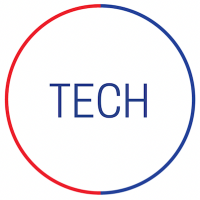
CNAS Technology and National Security Program
@cnastech
Technology and National Security Program at @CNASdc. Researching AI, 5G, autonomous weapons, and digital freedom. CNAS does not take institutional positions.
ID: 940590062332465152
https://www.cnas.org/tech 12-12-2017 14:32:00
7,7K Tweet
7,7K Takipçi
220 Takip Edilen


New article in Foreign Affairs from Jason Matheny, Roger Brent, and T. Greg McKelvey, Jr. has a lot of parallels with my new CNAS report on AI x Bio risks with Caleb Withers . Some resonances and disagreements below... 👇 1/5 cnas.org/publications/r…

"Even a revolution in bioweapons information assistance is unlikely to directly equate to a revolution in bioterrorists’ capabilities," Bill Drexel and Caleb Withers write in their new report. Read it now: cnas.org/publications/r…

"Taken together, China’s history of crises and the current conditions of its high-tech sectors suggest that Beijing’s bid to lead the world in biotechnology and AI is a recipe for disaster," write Bill Drexel and Caleb Withers in a new report. Read it here:


Digital access to chips only provides point-in-time compute power, which can be restricted or shut off at any stage. Access to a small number of chips ≠ proliferation concerns. Lennart Heim and I previously explored the benefits of more precise cloud controls, together with KYC.



"It is essential that U.S. leaders soberly address the risks of biological catastrophe—which many claim will change dramatically in the age of artificial intelligence." From Bill Drexel and Caleb Withers in their report on #AI and #biorisk: cnas.org/publications/r…



"Catastrophic AI risks, like all catastrophic risks, demand attention from the national security community as a critical threat to the nation’s health, security, and economy," write Bill Drexel and Caleb Withers in their CNAS report 👇cnas.org/publications/r…


Fast-moving advancements in biotechnology and AI may reshape the risk landscape for biothreats. Bill Drexel and Caleb Withers explore the state of biosecurity in a new report, and offer actionable recommendations to address emerging threats. Read👇 cnas.org/publications/r…

Is AI changing the course of elections? Or are such concerns exaggerated? CNAS adjunct senior fellow Keegan McBride and colleagues Felix M. Simon Sacha Altay unpack these questions in MIT Technology Review technologyreview.com/2024/09/03/110…

How should IGOs coordinate to assess the risks of AI? Are new institutions needed? CNAS research assistant Caleb Withers contributed to a Oxford Martin AI Governance Initiative Carnegie Technology and International Affairs paper addressing these important questions on #AIgovernance carnegieendowment.org/research/2024/…



"Sensible measures now can set on firmer footing the trajectory of biosecurity in the age of AI," Bill Drexel and Caleb Withers recommend in a new report. More here: cnas.org/publications/r…